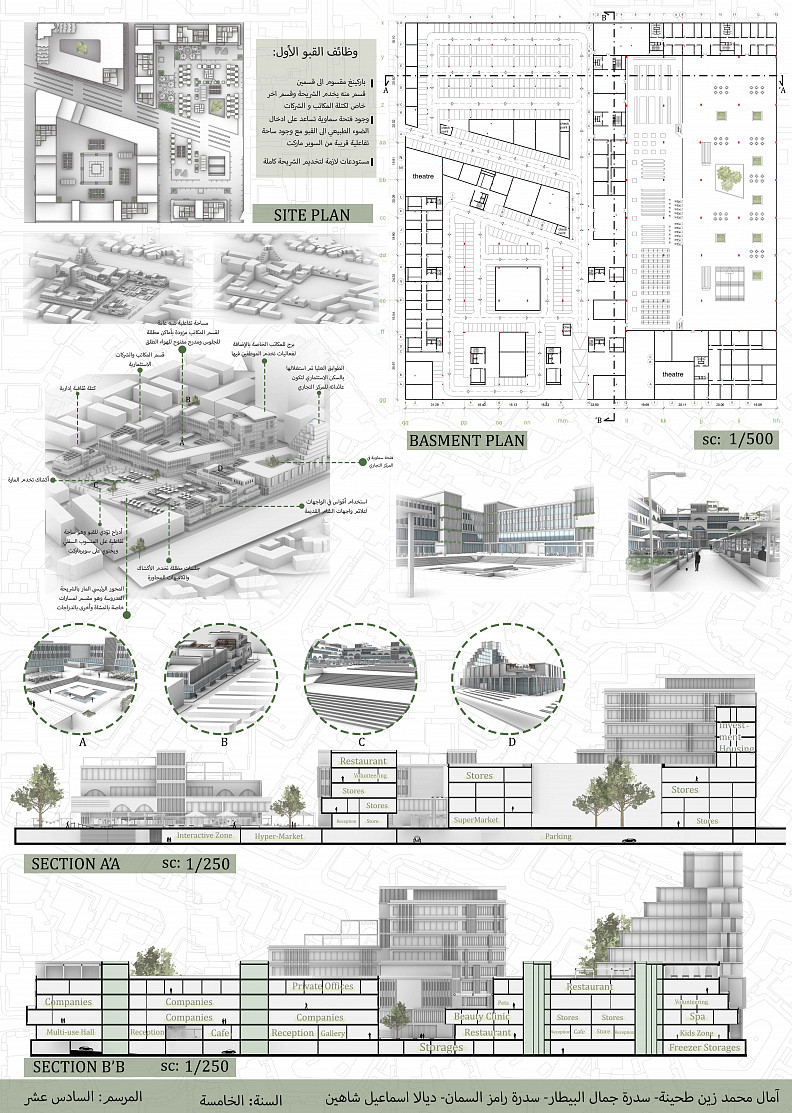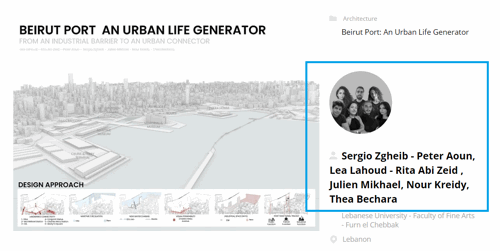Reclaiming "Ibn Asaker" : A Sustainable Urban Vision.

Project idea
This project proposes the adaptive transformation of a dense and chaotic industrial area in Damascus, Syria, into a sustainable and inclusive urban space. The site, while active and heavily frequented, suffers from disorganization, pollution, and a lack of public gathering places. Our vision reclaims the area not from abandonment, but from neglect in planning and infrastructure. By introducing accessible public spaces and community-centered design, the project addresses the need for social interaction, environmental improvement, and urban coherence. It offers a new model for revitalizing overburdened urban zones, where people can reconnect with each other and with the evolving identity of their city.
Project description
This urban redevelopment project aims to revitalize a dense industrial zone in Damascus by transforming it into a dynamic, inclusive, and environmentally conscious urban experience. The design responds to the need for organized public infrastructure in a chaotic and overly trafficked area, offering a structured, people-focused urban alternative.
The proposal features a diverse mix of functions, including a cultural and administrative hub, interactive lower-level plaza, and commercial kiosks serving passersby. A prominent stair system connects the street level to an underground interactive square, anchored by a supermarket and surrounded by shaded seating and social spaces.
The project introduces a main axis through the studied strip, structured into separated lanes for pedestrians and cyclists, ensuring safe and efficient movement. Architectural features include arched façades inspired by the traditional vocabulary of Old Damascus, blending heritage with contemporary needs.
The commercial center includes a central skylight enhancing natural light and ventilation. Its upper floors are repurposed as investment housing, generating revenue that supports the commercial zone’s sustainability. A dedicated office tower includes semi-public spaces and staff amenities, while a green rooftop and open-air staircases enhance accessibility and user experience.
Together, these elements create a multifunctional urban ecosystem that balances commercial vitality, social interaction, and cultural identity—reclaiming a chaotic site for the collective good of the city and its inhabitants.
Technical information
The project employs a hybrid structural system tailored to accommodate both underground and above-ground functions efficiently. The construction is primarily composed of reinforced concrete for structural stability, particularly in the commercial podium, underground plaza, and office tower components.
• Foundations: Deep reinforced concrete footings were selected due to the urban density and to support the vertical loads of the office tower and mixed-use commercial structure.
• Superstructure: The upper levels of the commercial center and administrative block use a shear wall and column-beam system, enabling open floor plans and flexibility in interior space design.
• Façades: The exterior incorporates prefabricated concrete panels with arched window openings, reflecting a contemporary reinterpretation of traditional Damascene architecture. High-performance glass panels are used in commercial and office spaces to optimize natural light and thermal performance.
• Roof System: The cultural and office blocks feature green roof systems with passive cooling strategies, supporting sustainable design and providing semi-public shaded rooftop areas for employees and visitors.
• Underground Plaza: The lower-level interactive plaza is constructed using post-tensioned slabs to allow for large column-free spaces. Natural ventilation and daylighting are introduced via a central skylight.
• Circulation: The entire site is stitched together through accessible staircases and ramps, including open-air public stairs and bicycle lanes, ensuring full pedestrian integration and inclusive mobility.
• Materials: Locally sourced stone cladding is used in public areas to ground the design in its regional context, while lightweight metal shading structures define semi-public zones and pedestrian walkways.
• Sustainability Features:
• Solar panels on select rooftops.
• Rainwater collection system for landscape irrigation.
• Natural ventilation strategies via central voids and louver systems.
This construction approach combines local building traditions with contemporary sustainability and mobility strategies to create an integrated urban intervention suited for the challenges of modern Damascus.



















